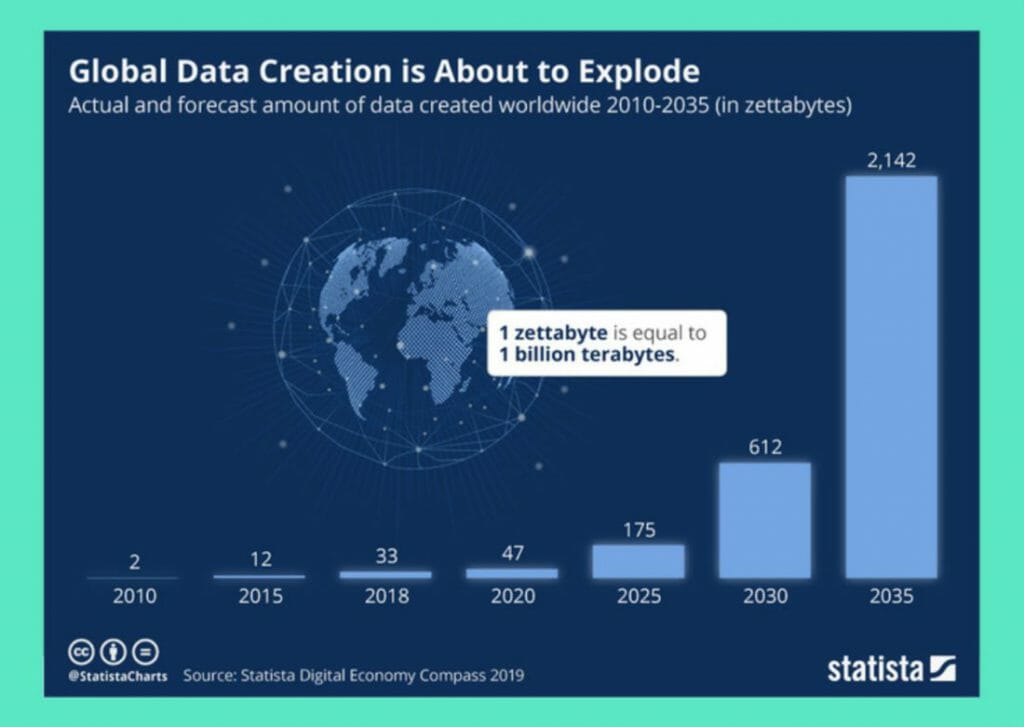Revolution #5 Security & Sensitivity
The practice of physically writing down passwords for online services might need to be updated in an age of advanced password storage and protection methods. Yet, this practice could be seen as a connection to a more tangible world as our lives become increasingly intertwined with the digital realm of the cloud. It’s as if jotting down passwords with a pen and paper serves as a nod to the past—a way to connect with a time when physical objects were linked to memory.
With the influx of digital accounts expected, where the average person could have 300 online profiles needing passwords by 2022, this seemingly simple act gains new importance. The prevalence of the cloud might drive us to seek comfort in something physical amidst its intangible vastness.
However, the cloud remains mysterious, and its security could be more apparent to many. Skepticism arises when Google offers to save a new password or when targeted ads for password management software appear after multiple login failures. This hesitation mirrors the feelings of those who are cautious about entrusting their sensitive information to the cloud’s care.
Ironically, this skepticism may become irrelevant as data finds its way into the cloud regardless. By 2025, 100 zettabytes of data (100 trillion gigabytes) are predicted to reside in the cloud, making up 50% of all data on Earth.
For most people, a sense of security comes from imagining data stored in a massive, humming machine called a server, protected in a fortified room where a watchful guardian named Graham stands guard. But the era of robust Grahams and physical defenses is waning. Cloud-based data requires cloud-based security, proven more effective than the once-trusted on-premises servers regarding data storage and transmission.
In translation, past security standards often amounted to a single Non-Disclosure Agreement (NDA). A Language Service Provider (LSP) would promise not to disclose client project data, leaving the client with limited protection against potential breaches.
Furthermore, methods of transferring sensitive data were as secure as a leisurely carriage ride along an 18th-century road. Basic email and file transfer protocols (FTP) were the only ways to share files between parties, leaving data vulnerable to interception, much like a meeting with a highwayman.
With translation moving to the cloud, safeguarding data became crucial. Cloud-based translation platforms have evolved to offer various protective measures and tools, including:
- Collaborative environments that minimize the need for data transfers between parties, reducing the reliance on email for file sharing.
- Encrypted channels for secure translator work. Particularly sensitive data is encrypted before transmission, making it unreadable except for the intended recipient.
- Mechanisms to limit translators’ access to source data, allowing access only during translation. Translators requesting source material undergo stricter screening processes, and their interactions are logged.
- Cutting-edge security tools, including robust firewalls and automated data self-destruction in case of a breach.
In addition to these advanced protective measures, cloud security is cost-effective, easy to manage, and scalable according to the volume of translation tasks. This concept brings substantial benefits to Language Service Providers (LSPs) and clients alike, prompting some to grapple with the notion that cloud security is still catching up to the advancements it has provided.
The evolution of cloud security has opened up a world of possibilities, reshaping the translation landscape and enabling an efficient, secure, and scalable future for industry and beyond.


